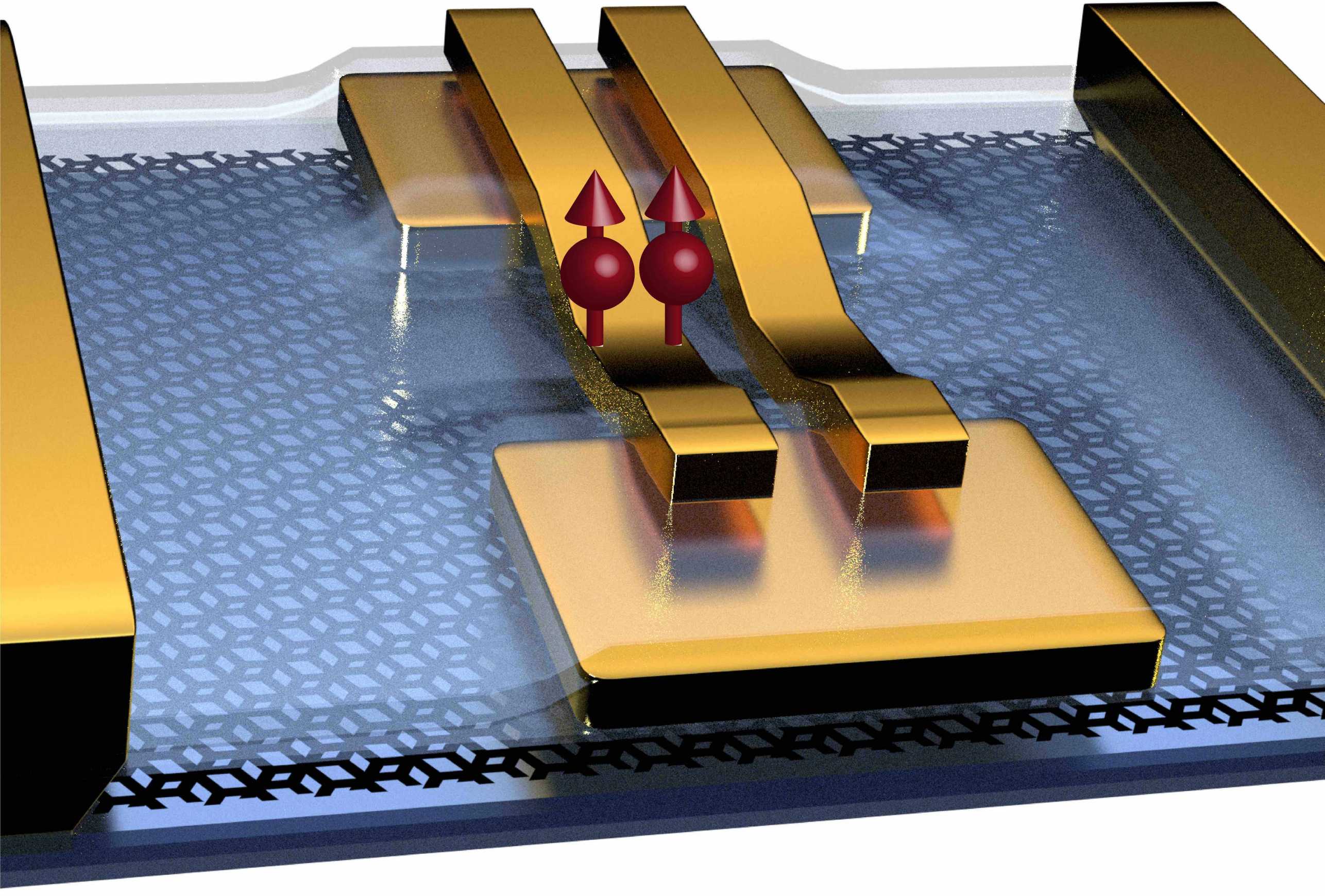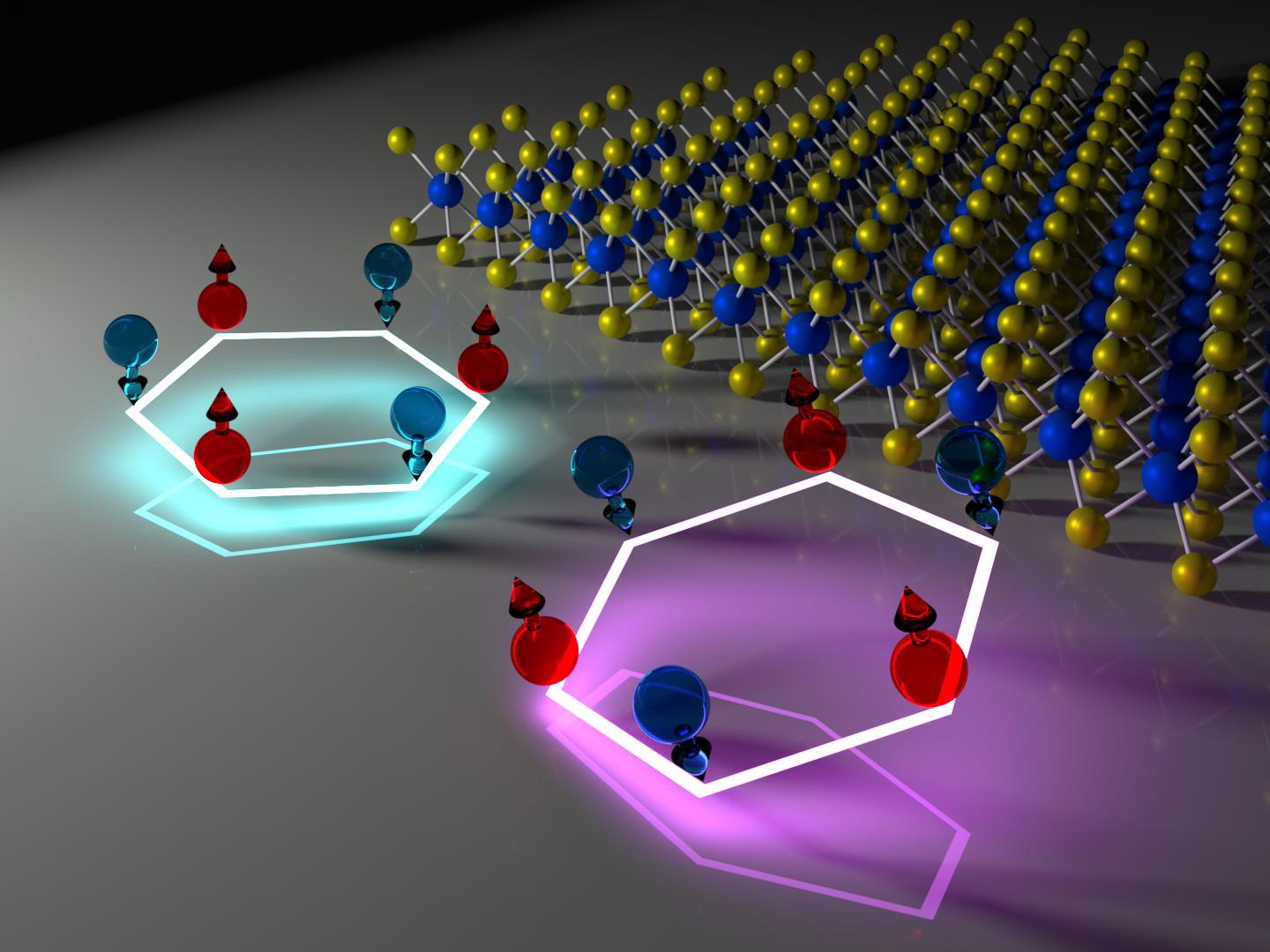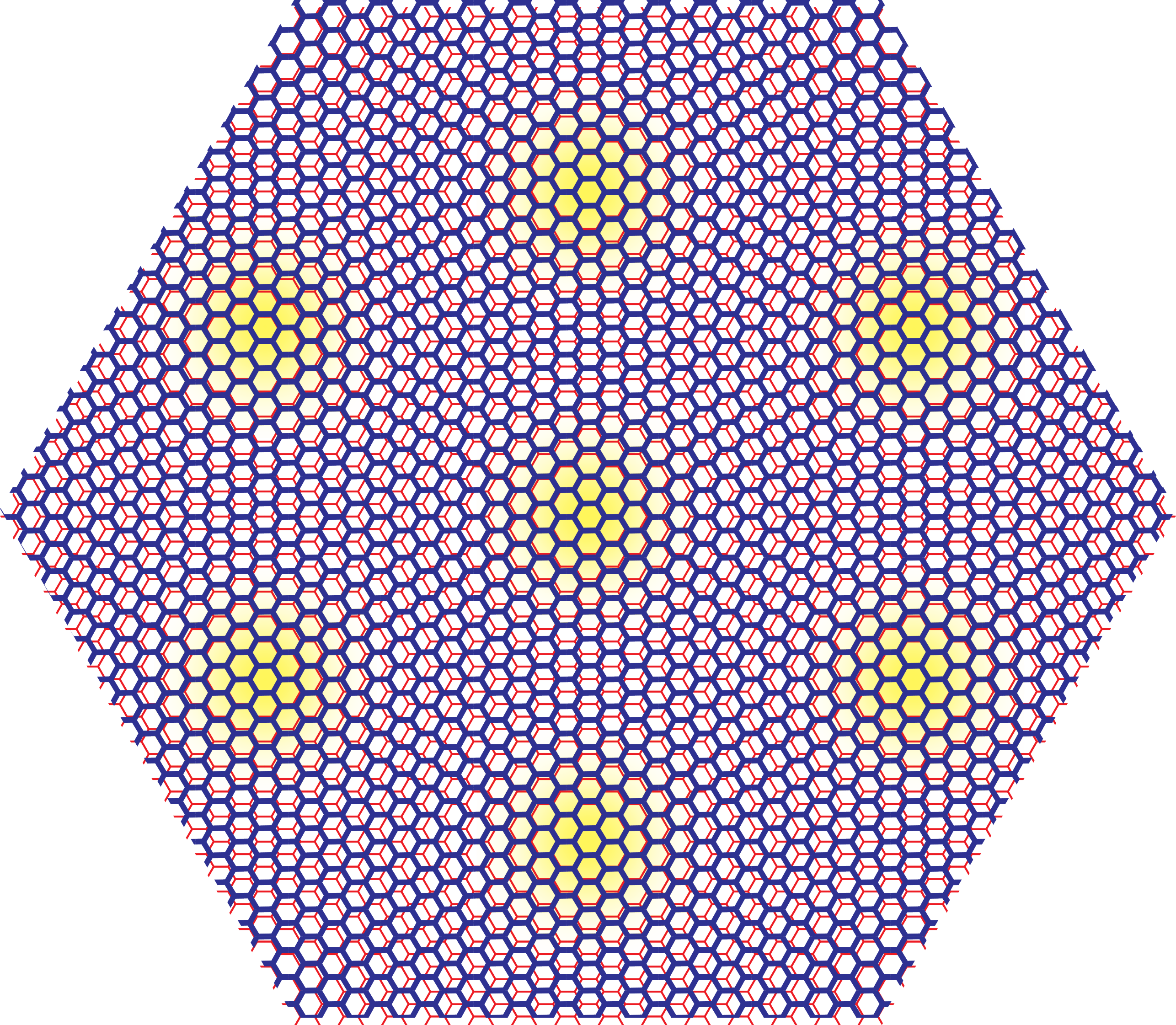Research Projects
Our group focuses on a variety of research projects. An overview is given below.
Electrostatically defined nanodevices in bilayer graphene
(Artem Denisov, Max Ruckriegel, Christoph Adam, Jonas Gerber, Lara Ostertag, Jessica Richter, Clara Galante, Tijl Degroote)
In this research project, we explore bilayer graphene as a promising host material for the next generation of spin qubits. Due to its low atomic mass and naturally low abundance of nuclear spins, bilayer graphene exhibits weak spin-orbit coupling and minimal hyperfine interaction. These two properties are essential for achieving exceptionally long coherence times, making bilayer graphene an attractive candidate for building stable qubits.
A key feature of bilayer graphene is its tunable band structure. When a perpendicular displacement field is applied, a bandgap opens in the otherwise gapless material. By precisely controlling this field through top- and back-gate electrodes, we can electrostatically confine charge carriers, forming a zero-dimensional quantum dot [1,2].
To probe these quantum dots, we use capacitive coupling to an on-chip charge detector. This device design enables real-time monitoring of single-electron occupancy [3], offering detailed insight into the quantum dot’s energy spectrum [5]. It also allows for advanced measurements of entropy [4]. Furthermore, we measure spin and valley relaxation times (T₁) in both single [6] and double quantum dots [7]. Our results reveal spin-valley relaxation times exceeding 30 seconds [8], a highly promising outcome for future quantum computing applications.

References:
[1] Tong, C. et al. Three-Carrier Spin Blockade and Coupling in Bilayer Graphene Double Quantum Dots. Phys. Rev. Lett. 133, 017001 (2024).
[2] Tong, C. et al. Pauli blockade catalogue and three- and four-particle Kondo effect in bilayer graphene quantum dots. Phys. Rev. Res. 6, L012006 (2024).
[3] Garreis, R. et al. Counting statistics of single electron transport in bilayer graphene quantum dots. Phys. Rev. Res. 5, 013042 (2023).
[4] Adam, C. et al. Entropy spectroscopy of a bilayer graphene quantum dot. arXiv:2412.18000 (2024).
[5] Duprez, H. et al. Spin-valley locked excited states spectroscopy in a one-particle bilayer graphene quantum dot. Nat. Commun. 15, 9717 (2024).
[6] Gächter, L. M., Garreis, R. Single-Shot Spin Readout in Graphene Quantum Dots. PRX Quantum 3, 020343 (2022).
[7] Garreis, R., Tong, C. et al. Long-lived valley states in bilayer graphene quantum dots Nat. Phys. 20, 428-434 (2024).
[8] Denisov, A. O. et al. Spin–valley protected Kramers pair in bilayer graphene. Nat. Nanotechnol. 20, 494–499 (2025).
Electronic properties of transition metal dichalcogenides (TMDs)
(Michele Masseroni, Jonas Gerber, Markus Niese, Tijl Degroote)
Transition metal dichalcogenides (TMDs) are a family of two-dimensional materials with broad electronic properties ranging from semiconductors to semimetal and superconductors. In our laboratory we focus on semiconductors (e.g. MoS2 and WSe2). We investigate the band structure of MoS2 by means of magneto transport experiments [1,2]. Furthermore, we take advantage of the large band gap (1-2 eV) to define nanostructures, demonstrating gate-defined quantum point-contact [3], as well as quantum dots [4]. In addition to studying nanostructures in TMDs, we also work on graphene-based quantum devices combined with TMDs, exploiting the enhanced spin-orbit interaction [5].

References:
[1] Masseroni, M. et al. Electron Transport in Dual-Gated Three-Layer MoS2. Phys. Rev. Lett. 3, 023047 (2021).
[2] Masseroini, M. et al. Gate-tunable band-edge in few-layer MoS2. arXiv:2503.03371 (2025).
[3] Pisoni, R. et al. Gate-Defined One-Dimensional Channel and Broken Symmetry States in MoS2 van der Waals Heterostructures. Nano Lett. 17, 5008-5011 (2017).
[4] Pisoni, R. et al. Gate-Tunable Quantum Dot in a High-Quality Single Layer MoS2 van der Waals Heterostructure. Appl. Phys. Lett. 112, 123101 (2018).
[5] Gerber, J. et al. Tunable spin-orbit splitting in bilayer graphene WSe2 quantum devices. arXiv:2504.05864 (2025).
Twisted 2D heterostructures
(Shuichi Iwakiri, Elias Portolés, Giulia Zheng, Marta Perego)
When two layers of graphene are twisted with respect to each other and superimposed, a moiré pattern appears. The characteristic lengthscale of the resulting system is thus that of the moiré pattern, orders of magnitude larger than the interatomic distance of a single graphene layer. Moreover, when the twist between layers corresponds to the so-called 'magic-angle' the conduction and valence bands of the system flatten, leading to a vanishing Fermi velocity. This results in a large Coulomb interaction energy compared to the kinetic energy of the electrons. At particular electronic densities, these interactions drive a transition to a superconducting phase.
We make use of the expertise of the group in device nanofabrication to harness such field-effect-tunable superconductivity. In particular, we focus on the mesoscopic superconducting effects exhbited by Josephson junctions [1] and superconducting quantum interference devices (SQUIDs) [2] in this material. Looking ahead, we engineer more complex devices allowing us to both probe the material and exploit its properties, aiming for applications in the field of superconducting electronics.

References:
[1] F. K. de Vries, et al., Nature Nano 16, 760 (2021).
[2] E. Portoles, et al., arXiv:2201.13276 (2022).
Superconducting-semiconductor hybrid devices
(Benedikt Kratochwil, Lisa Gächter, Max Ruckriegel, Wister Huang)
In a joint collaboration with the Wallraff group we investigate different gate defined quantum dot qubits in GaAs and graphene nanostructures. To probe the qubit properties we use a circuit QED based approach. We capacitively couple a superconducting coplanar waveguide resonator to one of the quantum dot plunger gates to introduce coupling between the resonator photon and the qubit.
In Anna Stocklauser et al. [1] we showed strong coupling of a double quantum dot charge qubit to a single microwave photon residing in the resonator. A key ingredient for the success of this experiment was the use of a high impedance resonator, enhancing the coupling strength by approximately one order of magnitude compared to standard 50 Ω resonator designs. Employing similar techniques we recently showed strong spin photon coupling [2]. The spin qubit was implemented in a resonant exchange qubit which allows to couple the spin and charge degree of freedom of the qubit to enhance the coupling strength. In succession to these works we showed two qubit coupling for two charge qubits [3], charge and Transmon qubits [4] and spin and Transmon qubits [5]. In the latest experiments we investigated different operation regimes for triple quantum dot charge qubits [6, in preparation].
Recent results in the fabrication of bilayer graphene quantum dots [7,8,9,10,11] and the promise of long spin coherence times give rise to new semiconductor based spin qubits. Using state of the art circuit quantum electrodynamics approach we aim to investigate bilayer graphene-based qubits. First proof of principle experiments will be performed with a 50 Ω Aluminum resonator coupled to a plunger gate of a bilayer graphene quantum dot.
References:
[1] A. Stocklauser, et al., PRX, 7 011030 (2017)
[2] A. J. Landig, et al., Nature, 560 179 184 (2018)
[3] D. J. van Woerkom, et al., PRX, 8 041018 (2018)
[4] P. Scarlino, et al., Nature Comm., 10 3011 (2019)
[5] A. J. Landig, et al., Nature Comm., 10 5037 (2019)
[6] J. V. Koski, et al., arXiv 1905.00846 (2019)
[7] H. Overweg, et al. Nano Lett., 18. 553 (2018)
[8] M. Eich, et al., Nano Lett., 18 (8). 5042 (2018)
[9] M. Eich, et al., Phys. Rev. X 8. 031023 (2018)
[10] A. Kurzmann, et al., Nano Lett., 19 (8) 5216 5221 (2019)
[11] A. Kurzmann, et al., PRL, 123 (2) 026803 (2019)